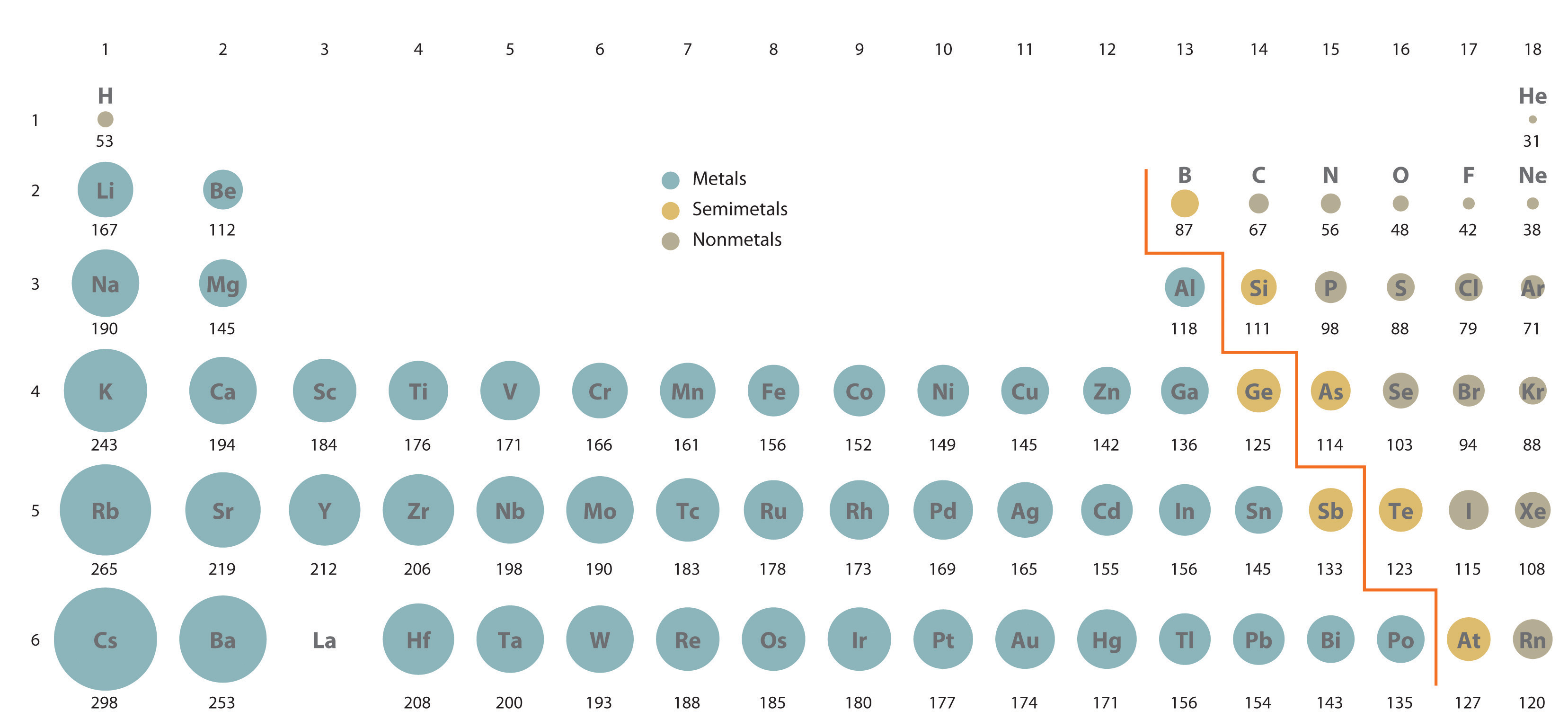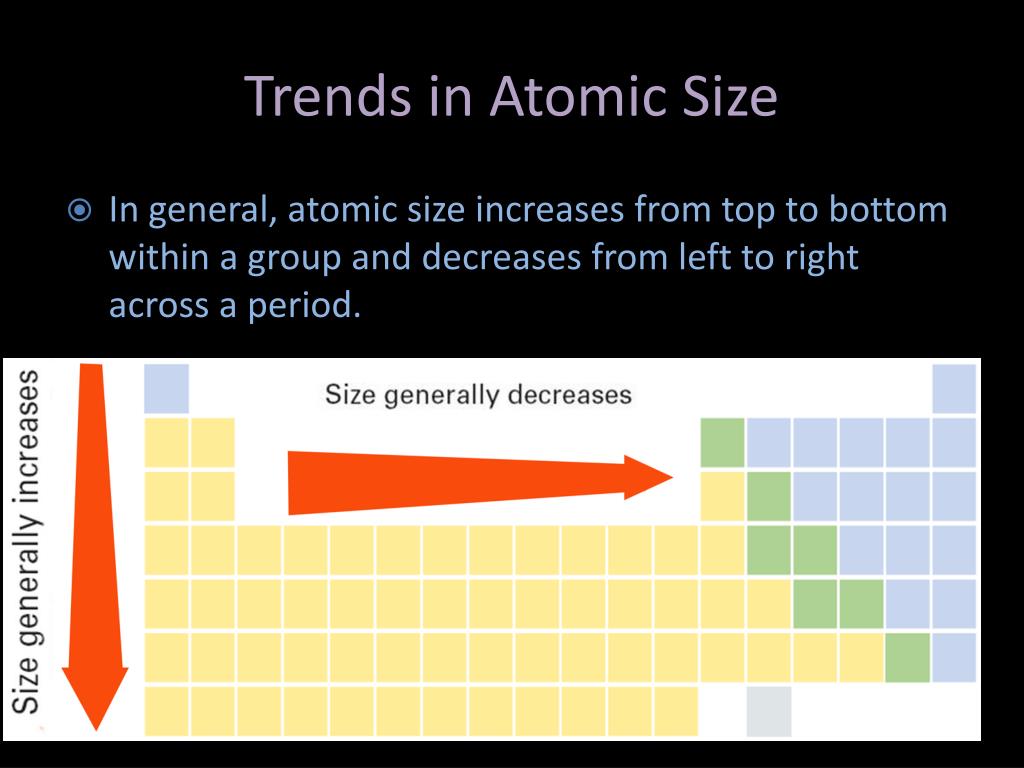

This increased positive charge attracts or pulls, the electrons in closer to the nucleus, decreasing the atomic radius.

Down the period, however, the number of protons also increases. This is because while the number of electrons increases down the period, they only add to the same main energy level, and therefore do not expand the electron cloud. For example, ionization energy, electronegativity, and of course atomic radius which we will discuss now. There are many trends on the periodic table. Let’s break down the trend into its period and group trends. Atoms decrease in size across the period and increase in size down the group. Atomic Radius Trend on the Periodic TableĪtomic radii increase toward the bottom left corner of the periodic table, with Francium having the largest atomic radius. Thus the atomic radius is measured as shown in the diagram below. This is because the borders of orbitals are quite fuzzy, and they also change under different conditions. While your initial thought may have been to measure the distance from the center of an atom’s nucleus to the edge of its electron cloud, this is inaccurate and not feasible. The atomic radius is measured as half the distance between two nuclei of the same atoms that are bonded together. Let’s discuss the definition of the atomic radius, also called atomic size, and the atomic radius trend on the periodic table.


 0 kommentar(er)
0 kommentar(er)
